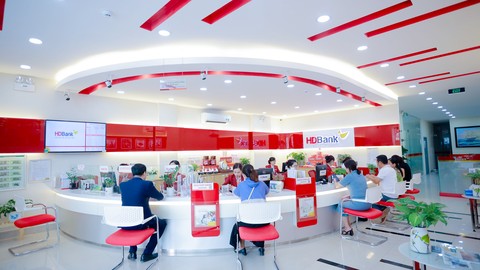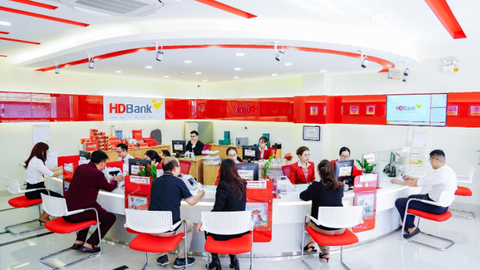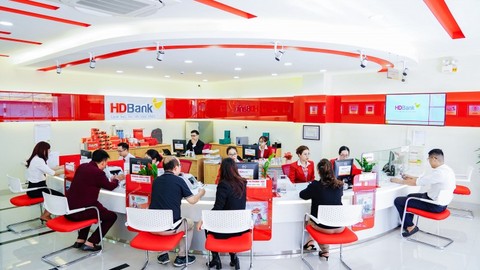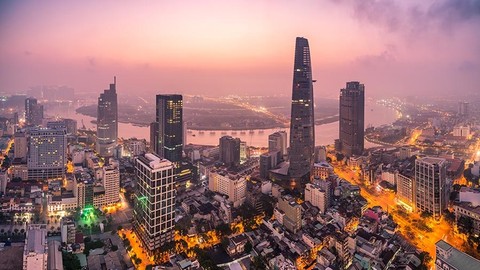
The article by Joonsuk Park, Head of International Subsidiary Banking, Wholesale Banking, HSBC Vietnam
No doubt, FDI flows into Vietnam play a quintessential role and contributes to the growth story of the country. Foreign Direct Investments have been one of the key catalysts spurring and transforming Vietnam into one of the most open economies in the region. The world has witnessed transformation across progressive regulatory changes, infrastructure modernization, formation of a characteristic supply chain manufacturing eco system and the emergence of an entrepreneurial young generation of talents leading the country into a digital era quantum leaping the analog stage of the economy that most countries have had to go through.
Today, Vietnam has successfully emerged as a leading frontier market in Asia and an export led economy. Multinational companies as well as local exporters have the privilege of securing a highway pass enabling the access to 15 of the G20 markets. The Vietnamese Government has actively sought to embed FTA execution as a key instrument to lay that platform very conducive to the country’s export growth. Vietnam currently has 15 FTAs and multiple regional pacts including the RCEP and CPTPP. The efforts are even more pronounced knowing that Vietnam was committed and pulled through to execute key FTAs including the UK-Vietnam, RCEP and CPTPP all in the midst of COVID. The domestic consumption market of Vietnam is in parallel another important arena for the incoming multinational companies. HSBC study shows that by 2030, Vietnam’s domestic consumption market will outsize the markets of Thailand, UK as well as Germany.
The FDI investors or those regional and global multinational companies operating in Vietnam effectively contributes to over 80% of the total exports out of Vietnam and more than 25% of local investments. Of those multinational companies, the intra-Asian multinational companies compose the bulk. Vietnam’s top exports include mobile, electronic goods, general machinery, apparels, footwear, wooden products etc. and of all of these sectors, the Asian multinationals across namely South Korea, China, Hong Kong, Taiwan, Japan, Thailand and Singapore play an integral part. The value of attracting the intra-Asian multinationals also translates into Vietnam stepping up not only in the value-add ladder in terms of export products but concurrently in expanding the depth and breadth of the domestic consumption market. These top intra-Asian investors continue to maintain their focus on Vietnam.
Following and supporting the flow of intra-Asian capital flow as part of our pivot to Asia strategy, HSBC has been providing advisory and treasury support to many multinational companies entering and operating in Vietnam and we are pleased to see the annual investment in-flows remain steady. Already coming into 2023, we have witnessed interest from a number of global intra-Asian multinationals engaging across a wide array of sectors including retail, semiconductors, electronics, mobile parts, plastics, renewables, logistics etc., looking to either expand or invest newly into the country.
During our recent meetings and events with our Thai clients and investors, we see there is vigor, excitement and confidence in how they are looking to further expand and invest across feedmill, packaging, retail, manufacturing and chemicals sectors on the back of mid long term growth prospect in a market fraught with the right elements for growth.
However, as having been the case for many countries and markets, COVID has also impacted Vietnam in one way or another. Looking at newly registered FDIs into the country, Vietnam experienced a roughly 25% drop from 2019 to 2020. In 2021, the numbers remained flat whilst in 2022, the investments further slightly deteriorated. There are multiple reasons behind. COVID had clearly delayed investment decisions for many multinational companies globally.
Early opening up of the country at the end of 2021 has not immediately led to FDI inflows. Investment planning and decision simply takes time not to mention that Vietnam has also become more selective to attract higher value added investments as opposed to the indiscriminate past. Added to these complications, heightened geo-political risk, rising inflationary pressure, rising cost of borrowing and global trade slowdown are further weighing down on the investment decisions of the regional and global multinational treasurers and CFOs.
Irrespective, the mid to long term view remain solid. Many prospect and existing FDI investors harbor the view that Vietnam will continue to benefit owing to an established manufacturing eco system in place, cost competitiveness, rising number of skilled workers, progressive regulatory support, affluence and the growing middle income story as well as from the China+1 leverage.
HSBC forecasts that Vietnam’s GDP will grow by 5.8% in 2023. Nevertheless, headwinds remain strong. The global trade recession impacts Vietnam’s exports, the elevated inflation deters domestic consumption and whilst the re-opening of China is expected to positively impact Vietnam across FDI inflows, exports and receipt of tourism, it will be a challenging year.
Consequently, replenishing the FDI flow back into Vietnam is of critical importance for both export and the domestic consumption market growth. And the intra-Asian flow cannot be underestimated. The intra-Asian investors have keen understanding of the Vietnamese market from both a cultural and business practice perspective. The geographical proximity allows for the ease of travel for those Head Office decision makers.
And many of the Asian markets themselves are export oriented and hence understand the innate advantage of leveraging on Vietnam’s rich FTA platform. The growing middle income and wealth story in Vietnam also underpins their efforts to further penetrate into the local domestic consumption market.
Whilst the Western multinationals battle with macro-economic challenges and geopolitical tensions, it may be an opportune timing for Vietnam to focus the efforts on attracting more of the intra-Asian FDI flows into the country. Multiple measures can be placed in to replenish the FDI flows and many efforts are already in progress. The mandate will then be to double up on the execution pace which will lead to investor confidence across the wide range of regulatory framework.
Vietnam is clearly on a transition journey to stepping up into an emerging market status. Active inflow of FDI investments will support to speed up that journey. Fortunately, the latest February PMI shows a rebound back up to 50 level signaling the recovery of new export order demand. Let’s now welcome the intra-Asian FDI flow – the Vietnam way, with energy and entrepreneurial spirit.



















